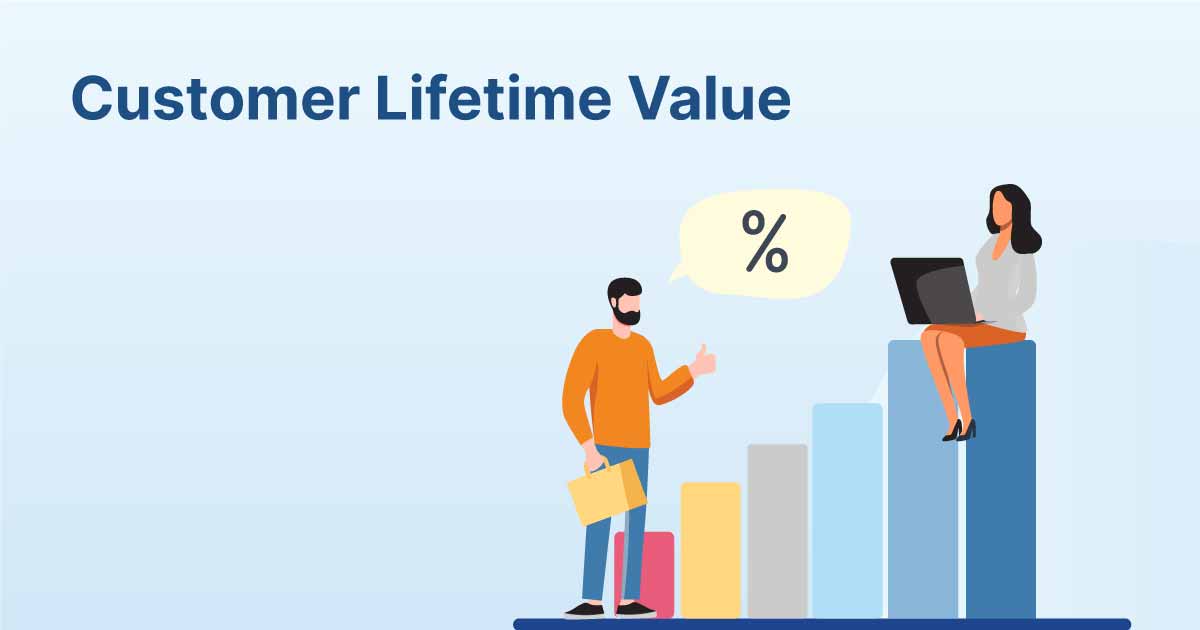
When you’re running a power washing business, it’s easy to focus on quick wins—booking the next job, hitting this month’s revenue goals, or getting that 5-star review. But to grow sustainably, you need to think long-term.
That’s where Lifetime Customer Value (LCV or LTV) comes in. It’s a powerful metric that tells you how much revenue a single customer can generate over the entire course of their relationship with your business. And once you understand it, you can make smarter, more confident marketing decisions that lead to real growth. 🚀
In this guide, we’ll break down what LTV is, why it matters, how to calculate it, and how to use it to fuel better strategies in your power washing business. 🧼📈
🧠 What Is Lifetime Customer Value (LTV)?
Lifetime Customer Value refers to the total amount of money a customer is expected to spend with your business over time—not just from the first job, but across repeat cleanings, upsells, referrals, and long-term loyalty.
💡 Example:
If a customer books you for a $300 house wash every spring for the next 5 years, that customer’s LTV is at least $1,500—and that’s not counting referrals or additional services.
💥 Why LTV Matters for Power Washing Companies
Understanding LTV helps you:
✅ Spend more confidently on marketing
✅ Focus on repeat business, not just one-offs
✅ Create smarter pricing and service bundles
✅ Know which customers are worth the most
✅ Build loyalty programs and retention strategies
When you know the long-term value of a customer, you stop sweating over $50 ad campaigns—and start seeing the bigger picture. 🔍📊
🧮 How to Calculate LTV (The Simple Formula)
Let’s break it down:
Lifetime Value = Average Purchase Value × Purchase Frequency × Customer Lifespan
Let’s plug in some power washing-specific numbers:
- Average job size: $275
- Repeat frequency: 2 times per year
- Customer lifespan: 5 years
👉 LTV = $275 × 2 × 5 = $2,750
That means every loyal customer is worth $2,750 to your business over time! 💰
And if they refer just one friend who becomes just as loyal? That’s a $5,500 swing from a single homeowner. 🤯
📊 Step-by-Step: Tracking Your Real Numbers
To make this metric meaningful, track:
- How many customers are repeat clients?
Use your CRM or spreadsheet to tag returning customers. - What’s the average ticket size?
Add up revenue from each customer, then average it. - What’s your client retention rate?
How many customers come back next year? Every season?
Track this monthly or quarterly to identify trends. Google Sheets or tools like Jobber, Housecall Pro, or QuickBooks can help automate this. 📋📉
💡 Using LTV to Make Smarter Marketing Decisions
Here’s where LTV becomes pure strategy gold:
1. Spend More on Ads—Confidently 📣💳
If you know the average LTV is $2,000, it’s totally fine to spend $100–$200 to acquire a new customer—because you’ll make it back, plus more.
💡 Example:
If Facebook ads cost $50 per lead, and 1 in 4 books a $300 job, your immediate ROI is slim. But if that customer stays 3+ years, your long-term return is huge.
2. Offer Loyalty Discounts or Maintenance Plans 🔁
Knowing LTV helps you justify offering:
✅ Discounts for booking multiple cleanings
✅ Annual maintenance plans
✅ Holiday or off-season deals
These offers reduce churn, increase loyalty, and keep that LTV climbing. 📈
3. Prioritize the Right Customers 🎯
Not all customers are equal. Some will ghost you after one job. Others will book you every season for years.
Use your LTV data to:
✅ Focus on customers in high-value neighborhoods
✅ Retarget your best clients with email or postcard campaigns
✅ Avoid racing to the bottom with discount-seekers
Smart growth starts with smart targeting. 🎯🏡
4. Create a Referral Program 💬👥
Your best customers already love your work—turn that loyalty into lead generation.
“Refer a friend, and you both get $25 off your next service!”
When one $2,000 customer brings you another, you’re doubling your LTV without extra ad spend.
5. Build Stronger Email and SMS Follow-Ups 📧📲
Use LTV insights to create win-back campaigns:
- “It’s been 6 months! Time to refresh your siding?”
- “Book your annual roof rinse and save 15%—exclusive to returning clients.”
This brings previous customers back into the pipeline instead of always chasing new ones.
💬 Common Mistakes to Avoid
🚫 Focusing only on first-job revenue
🚫 Ignoring repeat customer patterns
🚫 Not tracking data over time
🚫 Assuming every customer is worth the same
🚫 Spending on ads without knowing ROI
Without LTV, you’re flying blind. With it, you become a data-driven owner. 🎯📈
🛠️ Tools You Can Use
To track and manage customer value more efficiently:
📋 CRM Software – Jobber, Housecall Pro, Zoho
📊 Spreadsheets – Google Sheets with formulas
📧 Marketing Tools – Mailchimp, Constant Contact, or SMS tools
💰 Accounting – QuickBooks or Wave for total revenue tracking
The more organized your systems are, the easier it becomes to spot trends and scale faster.
💬 Final Thoughts
Tracking Lifetime Customer Value isn’t just a metric—it’s a mindset. It helps you:
✅ Spend more on marketing (wisely)
✅ Focus on building long-term relationships
✅ Recognize your most valuable clients
✅ Build a business that’s sustainable, not just seasonal
When you know what a customer is truly worth, everything changes. From pricing to marketing, you begin to operate like a pro—not just a hustler with a power washer.
Start calculating your LTV today—and use that number to fuel smarter, faster, and more profitable decisions. 💼🧽💵
Browse Amazon Here For Top Rated Power Washers And Accessories






